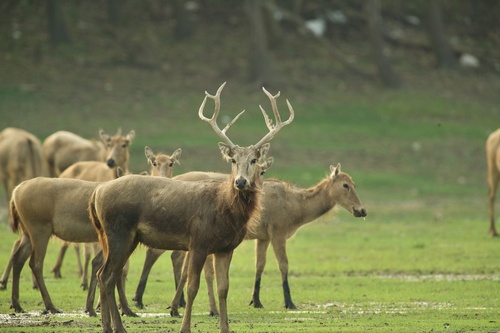
Père David's deer
Père David's deer, with its remarkable antlers and preference for wetlands, thrives in herds. Once extinct in the wild, it symbolizes conservation success. Its broad hooves and slender legs are perfect for traversing swampy terrains, highlighting its unique adaptation and resilience.
18 years
Lifespan
135.17 - 200.03 kg
Weight
Length: 1.981 - 2.198 m; Height: 1.1892 m
Size
2 years
Age of Sexual Maturity
3 months
Age of Weaning
18 mph
Top Speed
Extinct in the Wild
Conservation Status
Characteristics
Elaphurus davidianus, commonly known as the Père David's deer, is native to wetland environments in China. It has a unique combination of traits such as long, slender legs, broad hooves, and a distinctive antler structure. This deer is social, forming herds, and is adapted to swampy habitats.
Distribution Range of the Père David's deer
Elaphurus davidianus, commonly known as Pere David's deer, was originally native to the marshlands and subtropical forests of the Yangtze River basin in China. However, it is now extinct in the wild and primarily found in captivity and reintroduction sites.
Père David's deer's Habitat
Environmental Conditions
Pere David's deer historically inhabited wetland environments such as marshes, river valleys, and floodplains. These areas typically feature high humidity, abundant water sources, and dense vegetation.
Ecological Niche
Pere David's deer is adapted to an aquatic lifestyle, being a strong swimmer and often found grazing on aquatic plants. Its ecological niche involves feeding in water-rich areas, which provide both food and a degree of protection from predators. The species plays a role in the ecosystem by contributing to the maintenance of wetland vegetation through grazing.
Copyright @ Nature Style Limited. All Rights Reserved.
 English
English